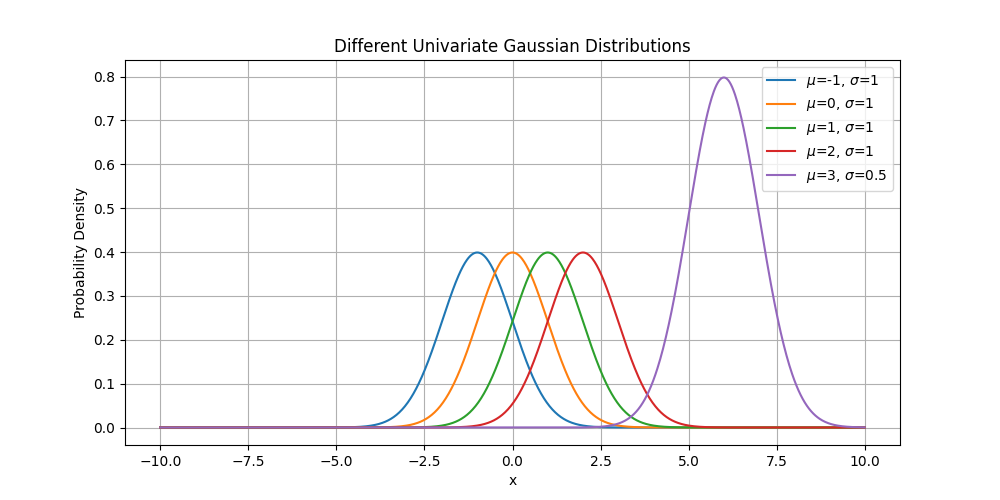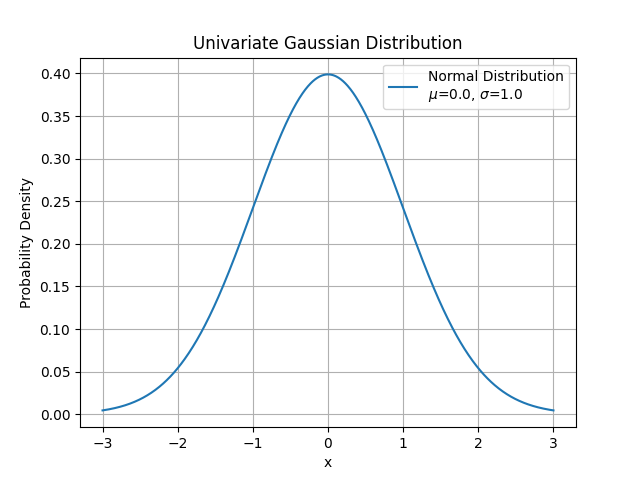Univariate Gaussian Distributions
Sources:
Notations
In this article we'll use following notations interchangeably.
The PDF1
A normal distribution is also called a Gaussian distribution.
Since a normal distribution is fully determined by its mean
The notation
We usually call a random variable
- normal (or Gaussian)
- normal (or Gaussian) variable
- normal (or Gaussian) random variable
- normal (or Gaussian)
For a random variable having standard normal distribution, we often use the notation
- standard normal (or Gaussian)
- standard normal (or Gaussian) variable
- standard normal (or Gaussian) random variable
- standard normal (or Gaussian)
We use
Definition
In statistics, a normal distribution or Gaussian distribution is a type of continuous probability distribution for a real-valued random variable.
We use
The PDF for
By definition,
You can think of the coefficient in front,
Notice the
Explanation

Code
1 | import torch |
Standard Normal

A normal distribution
The random variable that follows a normal distribution is often denoted as
Closure properties of the normal distribution
Recall that in general, if
Closure of the Normal Under Scale and Shift
If
We will prove this theorem later using Moment Generating Functions! This is really amazing the mean and variance are no surprise. The fact that scaling and shifting a Normal random variable results in another Normal random variable is very interesting!
Let
Closure of the Normal Under Addition
If
Again, this is really amazing. The mean and variance aren't a surprise again, but the fact that adding two independent Normals results in another Normal distribution is not trivial, and we will prove this later as well!
Probability density function↩︎